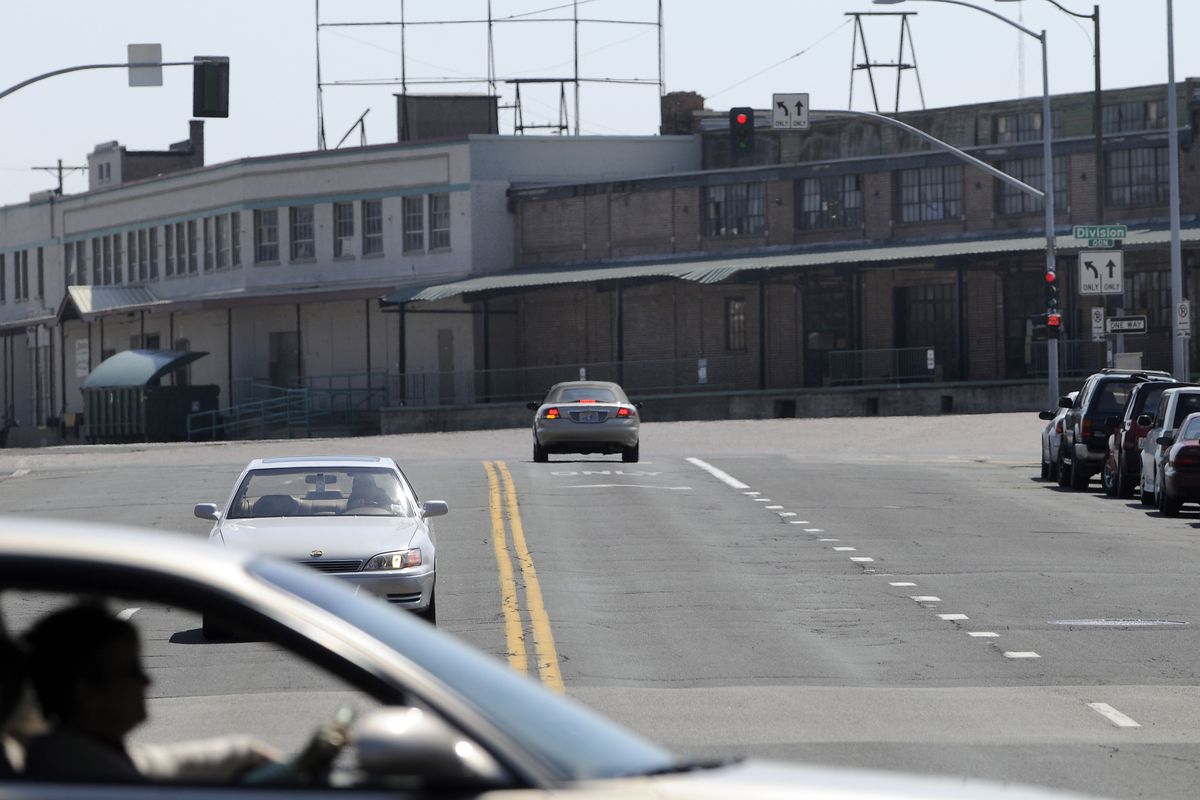City seeks to skirt law to raze buildings in roadway’s path

Historic preservation supporters are questioning the city’s circumvention of its own law aimed at protecting older buildings.
Spokane engineers this week filed for a demolition permit to tear down two 85-year-old brick warehouses owned by Washington State University that are in the way of their planned extension of Riverside Avenue east of downtown.
A law the Spokane City Council put on the books in 2005 says buildings eligible for the National Register of Historic Places can’t be torn down unless a replacement structure is planned or the project meets other exceptions.
The new road doesn’t qualify as a replacement structure, and other exceptions don’t apply. So engineers have listed WSU’s planned Biomedical and Health Sciences Building as the replacement for the warehouses, even though the new building will be three blocks away, and, officials acknowledge, is not tied in any way to the fate of the warehouses.
“If you’re building a building on another lot, to me, that doesn’t seem to be meeting the intention of the code,” said Matt Cohen, co-chairman of Spokane Preservation Advocates’ advocacy committee. “The city doesn’t seem to be interested in stopping the demolition of historic buildings downtown.”
But city administrators stress that the city code doesn’t detail what qualifies as a replacement building.
Mike Taylor, Spokane’s engineering services director, pointed to a federal report that considered the fate of the structures. It determined that the best route for Riverside requires demolition. “No argument will be satisfactory to them (advocates of saving the structures) if they are not satisfied with the answer,” Taylor said.
The easternmost warehouse was built in the 1920s by the Northern Pacific Railroad and leased to the Ryan Fruit Co., which later became Pacific Fruit and Produce Co. The structure is empty and in poor condition, although it “retains considerable integrity,” according to a 2005 assessment by Eastern Washington University.
The other endangered warehouse, also dating to the ’20s, was built by Western Piggly Wiggly, a grocery chain with headquarters in Spokane until it was purchased in 1929 by Mac Marr’s Stores, which in turn was bought by Safeway. The structure was designed by Gustav Albin Pehrson, a prominent Spokane architect whose other work includes the Paulsen Medical and Dental Building. WSU leases the warehouse to InterDecor, a wholesale carpet and tile distributor.
Taylor said just because a building is old doesn’t mean it should be saved. “These aren’t particularly noteworthy specimens,” he said. “If your dad said you’ve inherited them, would you say that’s a great thing?”
Cohen agreed that there are other higher-priority buildings to save. But he said the warehouses should be seen as economic opportunities that provide a “rich urban environment.”
“It’s a mistake to think that we should only save only the major landmark buildings,” said Cohen, a WSU associate architecture professor. “You tear enough of these down, and soon Spokane starts to lose its character.”
A federal assessment of the Riverside project looked at routes that could save the warehouses. It found the alternatives to be “not feasible,” partly because going around the buildings would require Sirti, a state-funded technology assistance agency, to give up most of its parking.
The federal report, completed in 2007, also notes concerns expressed by the Spokane Transit Authority that light rail, which is planned for the boulevard, would not work unless the buildings are torn down.
Cohen said he doubts that there is no solution. “If they were required to save the buildings, they’d find a way,” he said.
The final decision on approving the demolition permit will be made as early as next week by Joe Wizner, the city’s building official.